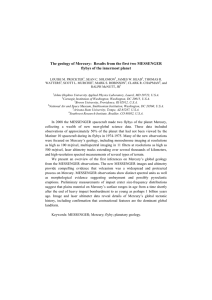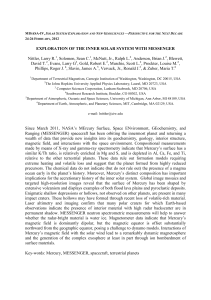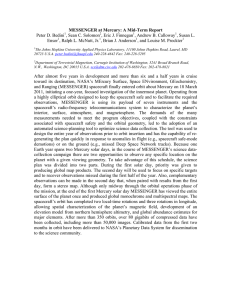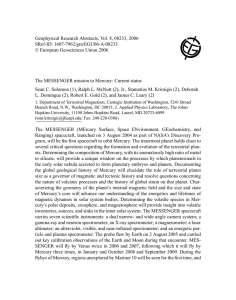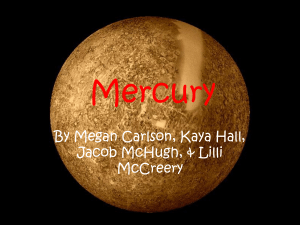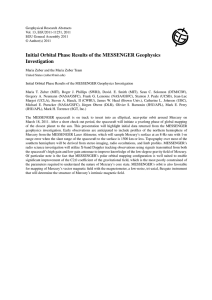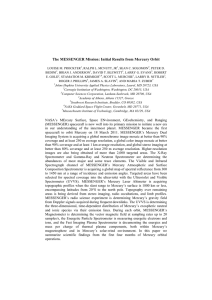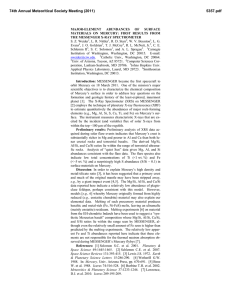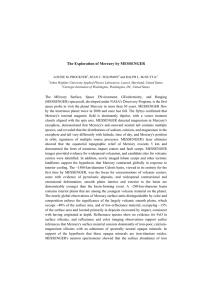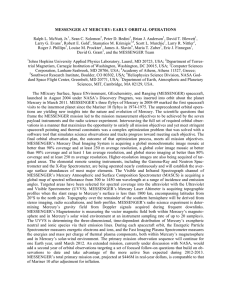The New View of Mercury after MESSENGER’s First Year in Orbit Ralph L. McNutt, Jr. , Sean C. Solomon
advertisement
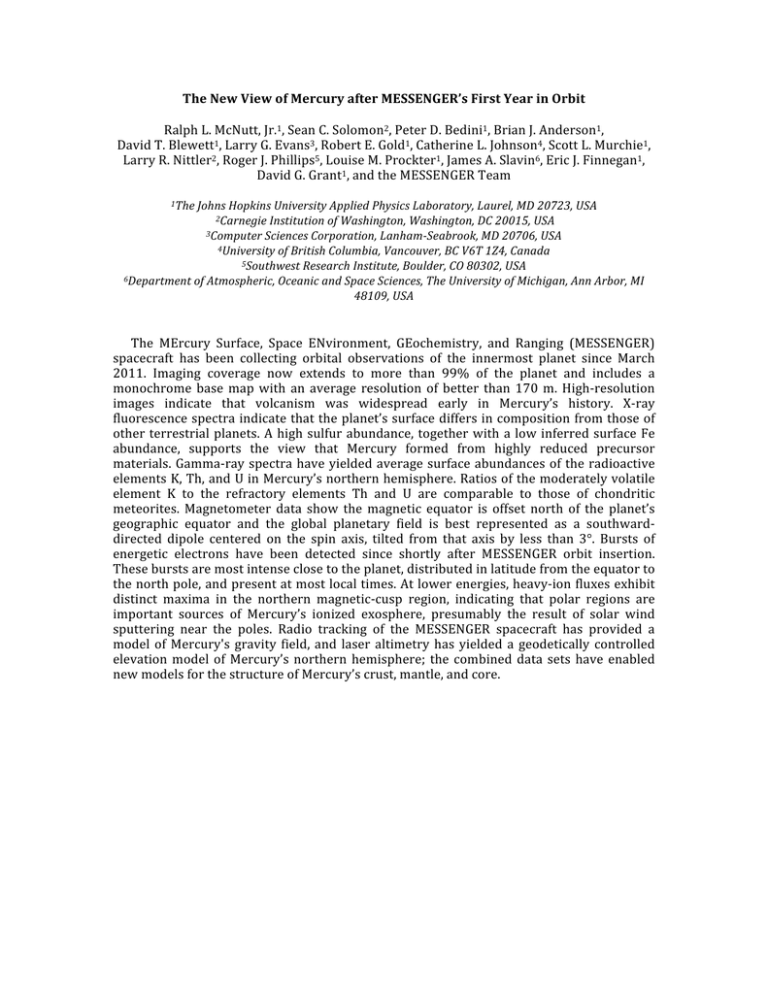
The New View of Mercury after MESSENGER’s First Year in Orbit Ralph L. McNutt, Jr.1, Sean C. Solomon2, Peter D. Bedini1, Brian J. Anderson1, David T. Blewett1, Larry G. Evans3, Robert E. Gold1, Catherine L. Johnson4, Scott L. Murchie1, Larry R. Nittler2, Roger J. Phillips5, Louise M. Prockter1, James A. Slavin6, Eric J. Finnegan1, David G. Grant1, and the MESSENGER Team 1The Johns Hopkins University Applied Physics Laboratory, Laurel, MD 20723, USA 2Carnegie Institution of Washington, Washington, DC 20015, USA 3Computer Sciences Corporation, Lanham­Seabrook, MD 20706, USA 4University of British Columbia, Vancouver, BC V6T 1Z4, Canada 5Southwest Research Institute, Boulder, CO 80302, USA 6Department of Atmospheric, Oceanic and Space Sciences, The University of Michigan, Ann Arbor, MI 48109, USA The MErcury Surface, Space ENvironment, GEochemistry, and Ranging (MESSENGER) spacecraft has been collecting orbital observations of the innermost planet since March 2011. Imaging coverage now extends to more than 99% of the planet and includes a monochrome base map with an average resolution of better than 170 m. High‐resolution images indicate that volcanism was widespread early in Mercury’s history. X‐ray fluorescence spectra indicate that the planet’s surface differs in composition from those of other terrestrial planets. A high sulfur abundance, together with a low inferred surface Fe abundance, supports the view that Mercury formed from highly reduced precursor materials. Gamma‐ray spectra have yielded average surface abundances of the radioactive elements K, Th, and U in Mercury’s northern hemisphere. Ratios of the moderately volatile element K to the refractory elements Th and U are comparable to those of chondritic meteorites. Magnetometer data show the magnetic equator is offset north of the planet’s geographic equator and the global planetary field is best represented as a southward‐ directed dipole centered on the spin axis, tilted from that axis by less than 3°. Bursts of energetic electrons have been detected since shortly after MESSENGER orbit insertion. These bursts are most intense close to the planet, distributed in latitude from the equator to the north pole, and present at most local times. At lower energies, heavy‐ion fluxes exhibit distinct maxima in the northern magnetic‐cusp region, indicating that polar regions are important sources of Mercury’s ionized exosphere, presumably the result of solar wind sputtering near the poles. Radio tracking of the MESSENGER spacecraft has provided a model of Mercury's gravity field, and laser altimetry has yielded a geodetically controlled elevation model of Mercury’s northern hemisphere; the combined data sets have enabled new models for the structure of Mercury’s crust, mantle, and core.
